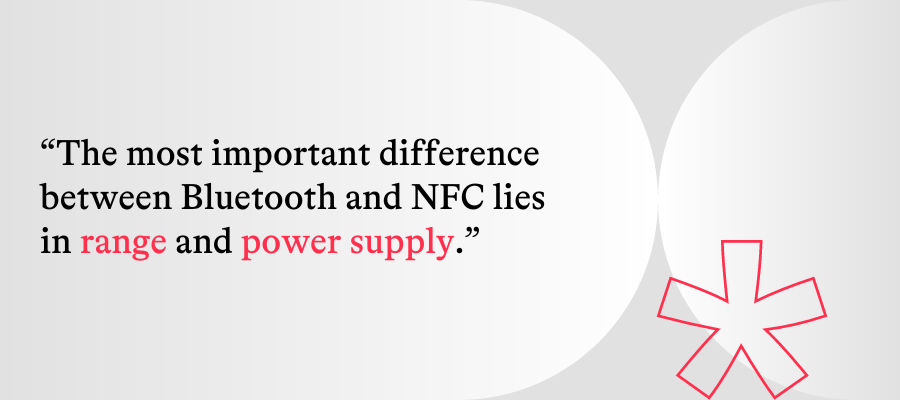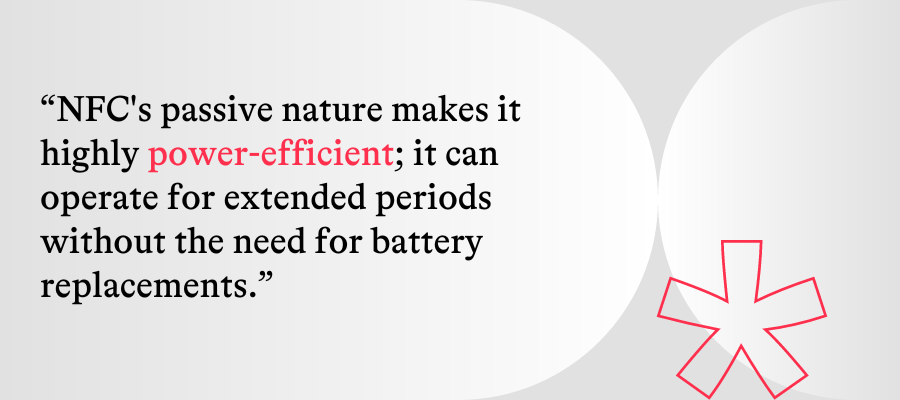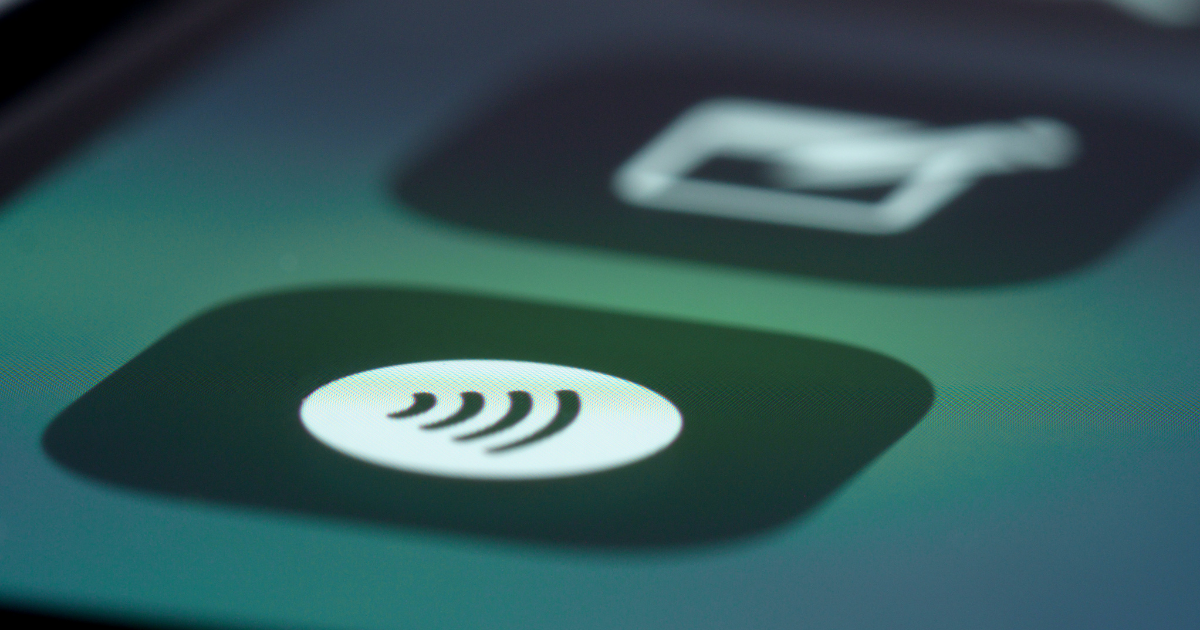As far as wireless communication goes, Bluetooth is by far the most popular choice for IoT products, and for a lot of good reasons. However, there are some instances in which it makes much more sense to use Near Field Communication (NFC) instead – with benefits to the entire project.
In this article, we'll look into the scenarios in which NFC is the preferred choice. From enhanced security to power efficiency and cost-effectiveness, NFC offers much more than some might realize, complementing Bluetooth and other wireless technologies.
First, let’s start with the most essential differences between the two.
Bluetooth and NFC: understanding the fundamentals
At its core, the primary difference between NFC and Bluetooth lies in their communication range. Bluetooth Low Energy (BLE) can theoretically reach up to 100 meters; in practice, it's usually around 50 meters. In contrast, NFC has an extremely short range, limited to only a few centimeters.
This, of course, has far-reaching implications for how both technologies are used. NFC is great for contactless payments, for example, as the distance can be very short, with minimal danger of anyone intercepting the connection.
Another thing to keep in mind is the power supply; BLE devices require a power source, typically in the form of a battery, while NFC can function without a dedicated power source.

The manner in which data is transferred also differs between NFC and Bluetooth. BLE devices transmit data directly over the airwaves using electromagnetic waves. In contrast, NFC operates by modifying the electromagnetic field generated by an NFC reader.
There are, of course, multiple other differences between the two, like the protocols and communication or the usage itself. But when it comes to choosing the technology for a digital product, the issue of range and power supply is the most essential one.
Why is NFC used?
There are multiple reasons why NFC, despite its limitations, is often a very convenient option.
Its most important advantage by far is enhanced security. With a range of only a few centimeters, it becomes incredibly challenging for a potential attacker to intercept transmitted data. This makes NFC an ideal choice for secure transactions, micropayments, and other sensitive data transfers.
Security is also ensured by the way in which we use the technology. NFC requires an interaction from the user to initiate communication; it can’t be started automatically.

In contrast, Bluetooth often operates in the background, potentially allowing for unnoticed data interception. NFC ensures that users are involved in the communication process, and the data can’t be ‘sniffed’ without prompting a person to initiate NFC usage in the first place.
NFC's passive nature also makes it highly power-efficient. It can operate for extended periods without the need for frequent battery replacements, making it a very convenient choice.
What makes NFC a suitable choice for a project?
Not every project will benefit from using NFC. That said, while for the vast majority of projects, Bluetooth will be the more suitable option, there are a few instances where NFC is a great solution to consider, especially alongside BLE.
Enhanced security
As already mentioned, when absolute data security is paramount, such as in contactless payments or sensitive data transfers, NFC's limited range makes it the preferred choice. If you want to be sure that the device does not transmit anything without an interaction from the user, it’s better to use NFC.
BOM cost
When comparing the cost of components, NFC is by far the more cost-effective option. For Bluetooth Low Energy there needs to be a more complex chip, battery, more advanced antenna, capacity resistors, and so on. In the case of NFC, the expense is only in one simple chip and a very simple antenna, making it a much cheaper solution.
Intermittent communication
For devices that remain mostly inactive and only need to communicate with the user briefly when necessary (like simply sending information, for example) NFC would be the more suitable choice; it needs the user’s interaction in order to work and doesn’t run in the background.
Pairing
NFC can simplify the initial pairing process, enhancing the user experience. Devices that use NFC for pairing allow users to simply place their mobile phones in front of the device, without the need to go through settings, enabling Bluetooth for pairing it or making an account. It makes the process as simple and pleasant for the user as possible.
Settings configuration
NFC is great for performing configurations on devices or without a persistent power source. This is especially useful for devices that are too small to include screens or for configuring devices to different regions or languages.
Mass tagging
In scenarios where numerous tags need to be deployed, NFC's passive operation makes it a practical choice for a project. An NFC tag operates without a battery, so it can also for a prolonged period of time – even decades.
Summary
While NFC is not as widely recognized as Bluetooth, it offers distinct advantages, especially in scenarios where security, power efficiency, and cost-effectiveness are critical.
NFC can be a very useful option to use in an IoT project alongside Bluetooth; it doesn't replace the usage of Bluetooth or other wireless technologies but can simplify certain connections and streamline processes, especially when it comes to pairing and configuration processes. This enhances user experiences, simplifies device setup, and can make it much easier for the customer to use the device.
Need help with your IoT product? Contact us; our experts will guide you through the best technology solutions for your project.

Przemysław Łagód
Head of Hardware

